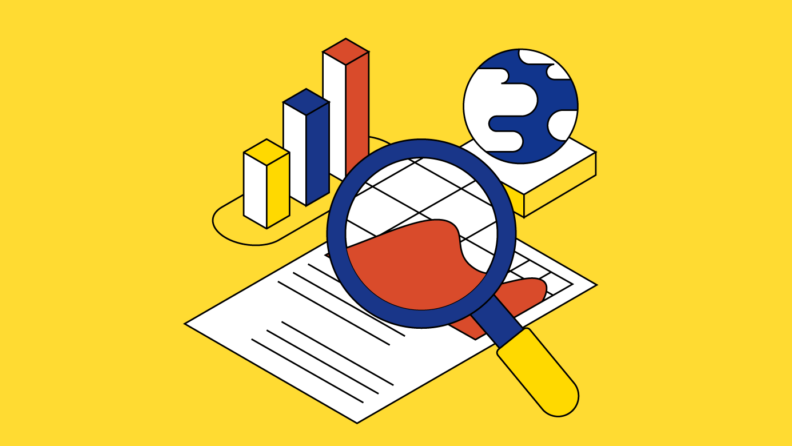While predictive analytics has been around for more than a decade, only now has it seen organizations elevate it to an essential part of their business operations. Today, predictive analytics can be used to increase your bottom line and provide you with a competitive advantage — especially if you use the interactive analytics software available.
If you’re curious about predictive analytics and how it can help your business thrive, explore this overview to find answers.
Defining Predictive Analytics
Predictive analytics is when you use data, machine learning, and statistical algorithms to identify and forecast future trends based on historical data. Using predictive analytics, you can hope to make more accurate, data-driven decisions about the market and consumers.
Types of Predictive Analytics
There are several types of predictive data analytics that you can use to assess data, unearth patterns, and observe trends to predict future events. Some popular models for these analytics include clustering, classification, and time series models.
Clustering Models
This type of data analytics model falls under the category of unsupervised learning that groups data based on similar attributes. You can use this type of predictive analytics to segment customers based on common features and develop unique strategies for each group.
Classification Models
With this predictive model, you fall under supervised machine learning. Using classification models, you can categorize data based on historical information to describe relationships within any given data set. Classify your prospects or customers into groups or answer questions with binary outputs, like true or false.
Some common classification models include decision trees, logistic regression, neural networks, and random forest.
Psst! You can use these types of models to calculate future revenue.
Time Series Models
When you use time series models, you’re utilizing various data inputs at a defined time frequency — whether it’s monthly, weekly, or daily. You can plot dependent variables over time to assess your data for trends, seasonality, and cyclical behavior, like forecasting how many calls your call center may receive per hour throughout the day.
The Importance Of Predictive Analytics

Organizations are turning to predictive analytics to help them solve a variety of problems and uncover unique opportunities. Some of the most common use cases that make predictive analytics essential include:
Fraud Detection: Combine various analytics methods for pattern detection that examines actions on any network in real time to spot abnormalities and identify criminal behavior.
Optimize Campaigns: Determine how a customer may respond to outreach or when they’ll make a purchase to attract new business and promote cross-selling opportunities.
Improve Operations: Use predictive models to forecast inventory and resource needs to streamline operations. You’ll reorder essentials on time and ensure efficient functionality. These models are also essential in building a sales forecasting formula that is consistently accurate.
Reduce Risk: Asses a buyer’s likelihood to default with credit scores and other metrics. In fact, a credit score is a predictive model that incorporates any information relevant to a person’s risk, providing you with an easy-to-understand metric.
Who Needs Predictive Analytics
Predictive analytics holds the answer for a variety of industries and use cases, including:
Banking: Financial services need machine learning and quantitative tools to help them predict credit risks and detect fraud. Analytics allows these institutions to support dynamic market changes in real-time for better future outcomes.
Human Resources: HR relies on predictive analytics tools to match prospective applicants to the right organization using a variety of survey metrics. With both qualitative and quantitative data, they can reduce turnover and increase employee satisfaction.
Healthcare: Hospitals and clinics can use predictive analysis to manage care, track outbreaks, and plan appropriate staffing. Data mining health records helps them learn more about patient reactions to medications and the volume of illnesses by seasonality.
Supply Chain: Logistics industries must be able to predict when to reorder inventory and how to set appropriate pricing strategies for the market. Predictive analytics is the key to meeting customer demand without overstocking and assessing the changing cost of products over time.
Sales & Marketing: Marketing and sales are already using artificial intelligence for their decision-making with BI and automated reporting. Historical and statistical analysis simply provides more tools for following and understanding the customer lifecycle.
Looking to level up your team’s analytics game? These upcoming analytics conferences are must-attends.
How Does Predictive Analytics Work?
There are several workflows for building a predictive analytics framework that provides actionable insights, but here is one example that includes five basic steps:
- Define Your Problem: You need a thesis and a set of requirements. Are you hoping to use modeling techniques to detect fraud? Are you trying to determine inventory levels for holiday shopping? Knowing your problem will help you choose the type of predictive model that will answer your question.
- Acquire & Organize Your Data: You might have decades of data to draw from or just the current data from the last year. Regardless of how much information you have right now, you should identify data flows and organize data sets in a data warehouse.
- Prep & Process Your Data: Raw data can only do so much to resolve a business problem. You need to clean up your data to remove any anomalies, fill in missing data points, and get rid of extreme outliers that may skew your results before you use any predictive analytics model.
- Develop Your Predictive Model: Data scientists use various tools and statistical techniques to develop a model that can find an answer to resolve your problem. Do you need linear regression? Decision tree? Machine learning algorithms?
- Validate Your Results: Don’t trust cloud computing to come up with the perfect answer every time. Check the accuracy of your model and adjust it as needed to get the results that make the most sense.
Examples Of Predictive Analytics Techniques
Here are a few samples of predictive analytics techniques and how this data analysis may work in the real world.
Regression Analysis
This technique estimates the relationship between variables to determine patterns in large datasets and the correlation between inputs. The best use case for regression models is for how independent variables may affect each other, like how a price increase will affect sales.
Decision Tree
This type of data science classification model places data into various categories based on distinctive variables. You use this statistical modeling method to understand individual decisions, like how customer experiences affect buying decisions.

Neural Networks
This modeling type uses machine learning to automate predictive analytics when working on complex relationships. They are essentially pattern recognition engines that are ideal for finding nonlinear relationships in your datasets. Use neural networks to validate the results of other models.
Increase Your Operational Efficiency
If prescriptive analytics sounds like a solution to your business problems, it’s time to turn to cutting-edge software that can handle big data sets and complex situations. Take a look at some of the best apps out there for analytics to find the best tools for your needs.
Keep up with the trends when you subscribe to the RevOps newsletter for insights directly to your inbox.



